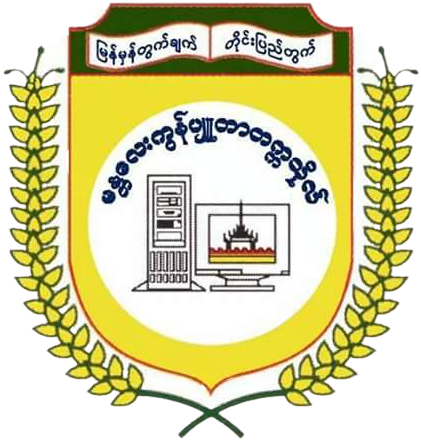PuBlicationS
University of Computer Studies, Mandalay
PUBLICATIONS
Kay Thinzar Phu | Lwin Lwin Oo
Abstract
This paper proposes an efficient feature points for traffic sign recognition (TSR) system. This system composed of adaptive thresholding method based on RGB color detection, shape validation, feature extraction and adaptive neuro fuzzy inference system (ANFIS). There are some important issues for real-time TSR system such as; lighting conditions, faded color traffic signs and weather conditions. The proposed adaptive thresholding method overcomes various illumination and poor contrast color. Features play main role in TSR system. The significant feature points such as termination points, bifurcation points and crossing points are proposed. This proposes feature points provide good accuracy in TSR system. Lastly ANFIS is used to recognize the proposed feature points. This system showed that this proposed method can achieve cloudy and drizzle rain condition. In this system, this proposed method is used to evaluate on Myanmar Traffic Sign data.
Date: 1st June, 2019 | International Conference on Computer and Information Science, ICIS 2018: Computer and Information Science pp 141-153 | Weblink
Kay Thinzar Phu | Lwin Lwin Oo
Abstract
The reliable traffic sign detection provides to achieve performance in traffic sign recognition. Features representation is an important factor for TSDR system. The purpose of this research is to propose an adaptive threshold method based on RGB color for detection and extracting new feature points for traffic sign recognition. In this system, the RGB color based adaptive threshold method is used to detect red, blue and yellow traffic signs. Output traffic signs perform shape verification. Second, new feature points are extracted from the verified image, such as centroid point, end point, and branch point. Finally, ANFIS is used to identify the process. This system uses Myanmar Traffic Sign dataset.
Date: 22nd February, 2018| Sixteenth International Conference On Computer Applications (ICCA 2018) | Weblink
Kay Thinzar Phu | Lwin Lwin Oo
Abstract
The selection of features is an important element in image processing. The important features make it possible to obtain good performances in the recognition of traffic signals. This paper presents the significant features points for traffic sign recognition. As a difficult research problem for many years, the recognition of road signs suffers from the different illuminations. The aim of the proposed research is to develop TSDR system under lighting changes in real time. This system proposes RGB color thresholding for traffic signs detection and new significant features points (crossing points, termination point and bifurcation point) are proposed. The features points are recognized with Adaptive Neuro Fuzzy Inference System (ANFIS) system. This system provides good results under sunny, cloudy, drizzle rain weather and uses Myanmar Traffic Sign dataset.
Date: 29th -31th May, 2018 | 12th International Conference on Research Challenges in Information Science (RCIS) | Weblink
Mie Mie Oo | Lwin Lwin Oo
Abstract
The task of labelling the audio sample in outdoor condition or indoor condition is called Acoustic Scene Classification (ASC). The ASC use acoustic information to imply about the context of the recorded environment. Since ASC can only applied in indoor environment in real world, a new set of strategies and classification techniques are required to consider for outdoor environment. In this paper, we present the comparative study of different machine learning classifiers with Mel-Frequency Cepstral Coefficients (MFCC) feature. We used DCASE Challenge 2016 dataset to show the properties of machine learning classifiers. There are several classifiers to address the ASC task. In this paper, we compare the properties of different classifiers: K-nearest neighbours (KNN), Support Vector Machine (SVM), Decision Tree (ID3) and Linear Discriminant Analysis by using MFCC feature. The best of classification methodology and feature extraction are essential for ASC task. In this comparative study, we extract MFCC feature from acoustic scene audio and then extracted feature is applied in different classifiers to know the advantages of classifiers for MFCC feature. This paper also proposed the MFCC-moment feature for ASC task by considering the statistical moment information of MFCC feature.
Date: 1st July, 2018 | International Journal of Research and Engineering (IJRE 2018) India,ISSN: 2348-7860 (O) | 2348-7852 (P) | Vol. 5 No. 7 | July 2018 | PP. 439-444 | Weblink
Mie Mie Oo | Lwin Lwin Oo
Abstract
Acoustic scene classification (ASC) is an important problem of computational auditory scene analysis. The proposed feature is extracted from the fusion of the Log-Mel Spectrogram (LMS) and the Gray Level Co-occurrence Matrix (GLCM) for the acoustic scene classification. LMS of the input audio file is calculated and then GLCM feature is extracted from LMS to detect the changes of audio signal in time and frequency domain. Multi-class Support Vector Machine (SVM) trains this feature in order to categorize the type of environment for audio input files. The main contribution of this paper is to extract the effective feature from the combination of signal processing approach and image processing approach. The purpose of this feature is to reduce computational time for classification. This system uses Detection and Classification of Acoustic Scenes and Events (DCASE 2016) challenges to show the robustness of the proposed feature.
Date: 1st May, 2019 | Software Engineering Research, Management and Applications. Springer, Cham, 2019. Print ISBN 978-3-030-24343-2 .Vol 845. pp 175-187 | Weblink

